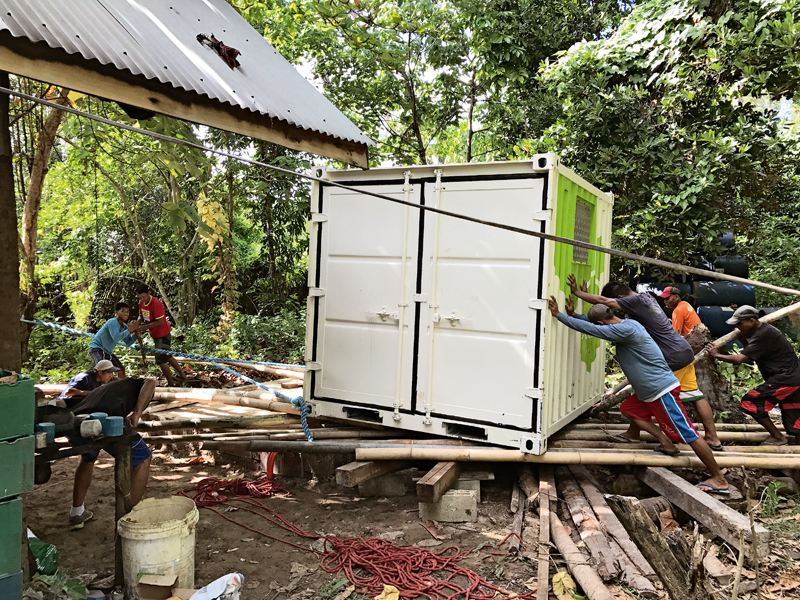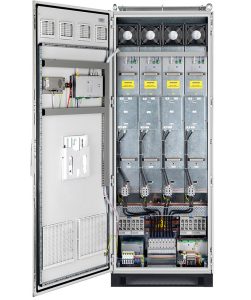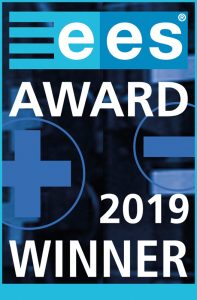Autarsys is in the business of providing smart energy accumulator solutions. In this interview, co-founder and Managing Director Matthias Roß gives us an insight into his company and how MR’s intelligent filter solution is helping him to turn his ideas into a reality.
Mr. Roß, how did you make the leap from being a social education specialist to head of a high-tech company?
Compared to my co-founder, Erich Bosch, who in my view is the very incarnation of an engineer, I definitely have a slightly different background. Originally, I worked on a lot of social and urban development projects. I first came into contact with the energy sector during a major project that focused on renewable energy supplies in the Azores.
An island in the archipelago needed to be supplied solely with solar and wind energy, so it required a battery storage system. As someone with no technical background, I looked at the problem from all angles to find out what financial and political conditions influenced the project and what had to change in order to market these kinds of projects all over the world. I picked up the technical expertise pretty much as I went along.
What made you decide to found your own company?
During that large project, I noticed that the high price of batteries posed a major obstacle when it came to financing systems like these and making them profitable. At the same time, it was clear that the continued expansion of photovoltaics and wind energy was limited by fluctuations in the grid.
To overcome these issues, you need to have some kind of storage system that is not only able to balance out continuous fluctuations in the grid but is also able to transfer energy from day to night or from windy to calm conditions. Without this kind of system, the proportion of electricity produced from renewable sources of energy will remain very low. When we became aware of this situation, Erich Bosch and I wanted to dedicate ourselves to storage technology—and that’s what led us to establish Autarsys.

We don’t just make software and develop projects—we also create real-world product solutions in container form so that we can bring storage technologies to the market cheaply and on a large scale. This is vital, as a majority of the world’s population still has either no access or only limited access to electricity. And this despite the fact that in many developing countries the conditions for wind and solar plants are actually favorable. The missing link is a stable power grid that has storage capabilities and is also affordable.
What exactly does your solutionlook like?
The solutions we provide are energy storage systems (ESS) which take advantage of the technical benefits delivered by the latest generation of lithium-ion batteries. When demand for energy is low, the ESS can store energy generated by various systems, such as solar plants, wind plants, and diesel generators, and then release it when demand increases. As a result, these systems guarantee a smooth, continuous power supply, acting as a buffer between generating plants and, in off-grid operation, taking on the key role of a grid-forming power plant, a central element which controls grid frequency and voltage.
Why have you opted to use GRIDCON® PCS, the modular power conversion system?
The power-conversion solution from Maschinenfabrik Reinhausen acts as a central, smart network-management system. The power converters filter things like harmonics, compensate for reactive power, and actively balance the load, all of which keeps the voltage stable in the grid. A sophisticated control system uses structural calculations based on characteristic curves to ensure that operation remains smooth and works in parallel to the solar plants, wind plants, and diesel generators that feed in power.
What other advantages are there to using the GRIDCON® PCS?
There are many. First, a key advantage for our large solutions in particular is that the system is built up from an active grid filter that balances out certain fluctuations itself. The GRIDCON® PCS also has a very rapid switching frequency, making it a compact power converter that can be used anywhere. In addition, the GRIDCON® PCS is extremely easy to maintain, as every single module is a complete power converter.
When maintenance work does need to be carried out, this means that we don’t need to fly in a specialist—trained staff at our local partners can replace parts or expand the system themselves by replacing entire modules, even in remote areas. This is something our competitors cannot offer. In their systems, the power converter either works as a whole or malfunctions completely.
Another benefit is the DC/DC booster, also known as a boost converter, which is part of the GRIDCON® PCS building for modules from 42 kW to 126 kVA. It solves a problem that occurs frequently in cases where the energy accumulator is later upgraded, which is that the original battery modules are no longer being made or the manufacturer has changed the specifications. New batteries with different voltages and topologies must be able to work together—so this is where the DC/DC booster comes in, as it enables you to integrate new batteries without having to buy a whole new system. Expanding the system by adding individual modules provides a fantastic cost benefit.
“The power-conversion solution from Maschinenfabrik Reinhausen acts as a central, smart, network-Management system.”
Which applications is your energy storage solution suitable for?
It’s primarily used in off-grid applications and rural electrification projects, which involve operating independent grids based on photovoltaic systems in tandem with battery systems and ensuring they remain stable. We sell standardized systems for these applications in order to take advantage of the economies of scale that series production brings.
As a result, we can provide stable and affordable grids to the most remote corners of the world. The solution is also used in commercial and industrial projects. These include facilities such as cement works or mines that operate beyond the grid and are supplied by large diesel generators, or remote hotels and resorts. In fact, this area includes pretty much any facility with special energy supply requirements that the grid is unable to meet—whether because it’s unreliable, subject to fluctuations, or only able to provide energy to a limited extent.
We also work in large-scale plants. This area includes what are known as grid services, the provision of reserve energy, and the balancing of fluctuations in solar and wind farms with large power outputs in the three-figure megawatt range.
“The GRIDCON® PCS allows us to create intelligent storage solutions that are completely unique in the market.”
Your idea of providing even remote areas with electricity sounds intriguing. Can you give us an example?
Sure—in the Philippines, there is a village called New Ibajay, with a population of 1,600. A diesel generator was supplying electricity to 280 homes, two schools, and a small health clinic there for four hours a day, and even then, it was very unreliable. So we implemented our Mini ESS in order to meet the daily demand for 300 kWh in the village. Now, the community’s development is no longer restricted by an arbitrary energy limit. When a new business idea leads to increased energy demand, our system can be easily scaled up to provide more energy capacity while maintaining the same high-quality supply.
In terms of growth, what do you have planned for the next few years?
We want to continue developing in all three of our business areas and push ahead with new niche developments, but they’re not official yet. We’re also working on how we can improve the efficiency of our battery management systems. However, we also want to press ahead with the projects that are more concrete, of course.
One of the key locations on which we are focusing is Madagascar: It’s very sunny, the country is one of the poorest in the world, and the electrification rate lies somewhere between five and seven percent. At the same time, there are 16,000 settlements with no access to electricity there, so there is a lot of demand. What’s missing is funding—so we are building up our own funds in order to implement these projects efficiently and on a grand scale. One thing’s for sure, though—projects like this are not going to dry up any time soon.
MORE INFORMATION
Founded in 2013, Autarsys GmbH is headquartered in Berlin and specializes in manufacturing energy storage systems. In order to finance projects all over the world, the company partially relies on crowdfunding Projects.
 Reinhausen’s GRIDCON® range offers power-conversion solutions that make it possible to create smart energy accumulators and ensure a high standard of grid Quality.
Reinhausen’s GRIDCON® range offers power-conversion solutions that make it possible to create smart energy accumulators and ensure a high standard of grid Quality.

This year, the GRIDCON® PCS 4W received the ees AWARD. This prize is awarded to groundbreaking products and solutions for the stationary and mobile storage of electricity.
YOUR CONTACT
Do you have any questions about our power-quality products for energy accumulators?
Andreas Lamert is here to help:
A.Lamert@reinhausen.com
